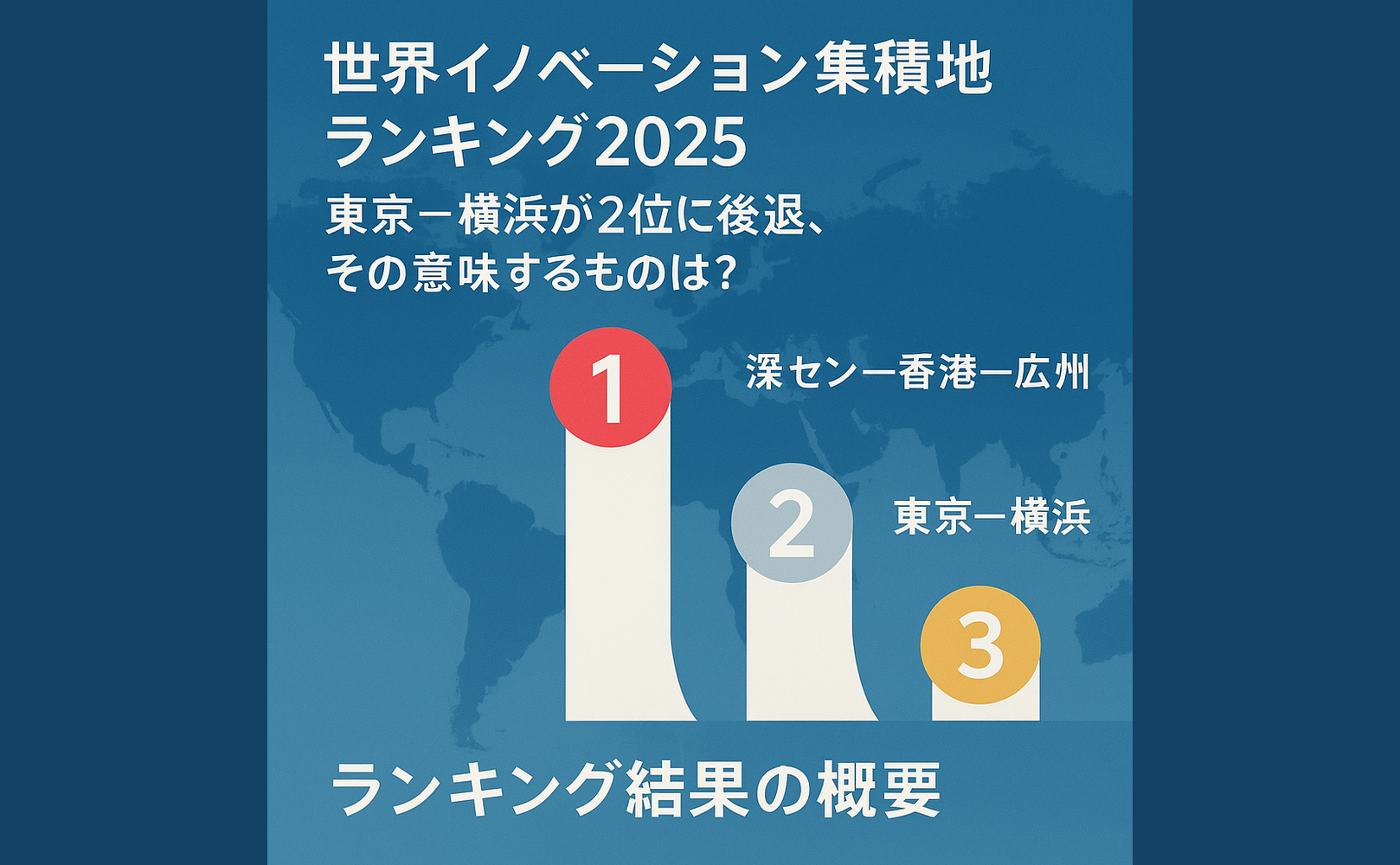Overview of the Ranking Results
The World Intellectual Property Organization (WIPO) announced the 2025 edition of its Global Innovation Clusters Ranking. This year, the Shenzhen–Hong Kong–Guangzhou region of China claimed the top spot for the first time, while the Tokyo–Yokohama region, last year’s leader, slipped to second place. Osaka–Kobe–Kyoto ranked 11th, and Nagoya placed 28th, bringing Japan’s total to three regions in the top 100. By country, China led with 24 regions, followed by the United States with 22, demonstrating overwhelming dominance.
Startup Investment as a Decisive Factor
A notable feature of this year’s ranking is the inclusion of “investment in startups” as part of the evaluation criteria. In addition to international patent filings and scientific publications, the vitality of the startup ecosystem is now more directly reflected. The Shenzhen–Hong Kong–Guangzhou region exemplifies this strength, having experienced rapid growth backed by abundant risk capital and international entrepreneurial networks. Conversely, while Tokyo–Yokohama remains a world leader in research output and patent filings, it has comparatively lagged behind in terms of startup investment.
Japan’s Challenges and Opportunities
The fact that Japan’s three major metropolitan areas made it into the top 100 still highlights the country’s solid technological foundation. However, as the emphasis in innovation shifts from “research output” to “implementation and investment,” certain challenges are becoming increasingly apparent. In particular, Japan has long been criticized for falling behind Western countries and China when it comes to fundraising environments and regulatory flexibility for supporting startups. For Tokyo–Yokohama to regain the top spot, strengthening the ecosystem that links research and development capabilities with commercialization will be indispensable.
Future Prospects
This year’s ranking can be seen as a litmus test for whether Japan can transition from a “patent powerhouse” to a “nation of innovation implementation.” The key will be whether Japan can expand mechanisms that channel the research achievements of universities and major corporations into startups and attract greater risk capital. Furthermore, the inclusion of Nagoya and the Kansai region in the ranking suggests the potential for a multi-regional innovation hub model, rather than excessive concentration in Tokyo. Leveraging regional strengths to build ecosystems that can compete globally will be Japan’s challenge for the coming decade.

